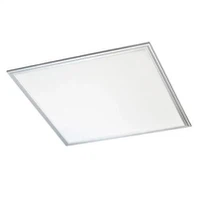Electrician Explains What Happens When Using Wrong Light Bulb Wattage

Everyday life involves the use of light bulbs. It's simple to take these gadgets for granted because they are so widely used. Until the day comes when a light bulb needs to be changed, that is. It pays to know if you're buying the perfect bulb for your needs before you go out and replace that broken light bulb in your house, business, or appliance. Buying the incorrect bulb can result in an ill-fitting bulb, higher energy usage, and could even pose a safety issue. More precisely, exceeding the maximum wattage for a light bulb is risky and could put your home's safety at risk.
What Takes Place When a Higher Watt Light Bulb Is Used?
When customers experience issues with purchasing the incorrect light bulb, it is typically because they did so by choosing a bulb with a larger wattage than was recommended. The maximum wattage is often indicated by the watt rating on your light socket. In other words, switching to a lower-wattage light bulb shouldn't be a problem, but switching to a higher-wattage one could result in overlamping, which poses a safety risk for your house.
Overlamping: What is it?
When you purchase a light bulb whose wattage is too high for your electrical fixture to support, you are overlamping. If you exceed a fixture's acceptable wattage rating, which is set by the manufacturer, extreme heat will result. Overlamping can cause a variety of issues, and the longer it persists, the more at risk you and your property are.
Risks of Excessive Lighting
The following are some risks associated with overlamping:
Overheating
Using a light bulb with a wattage that is too high can cause the bulb to overheat. The wire insulation and the light socket may both melt due to this heat. As soon as that occurs, you put yourself at risk of arc faults, which could even result in property fires.
Your light fixture will be permanently harmed by overlamping. Even if you catch yourself using a bulb with a higher wattage than you should and try to correct the error, it can already be too late. It's likely that you have already dealt with your light fixture suffering permanent damage. This is why it's crucial to confirm that the light bulb you replaced had the exact wattage requirements.
Inside Enclosed Fixtures, Light Bulbs
You should pay much closer attention to choosing the right lightbulb if your lightbulb is contained in a fixture. The rate of overheating is accelerated by enclosed fixtures. This indicates that fires are more likely to start in certain circumstances.
How to Reduce Overlighting
You just need to know where to look. Modern fixtures expose their wattage rating somewhere in the assembly. When you know the wattage rating of your fixture, buy a light that matches that rating or is less. You'll be safe as long as you don't exceed the manufacturer's suggested wattage. If your fixture doesn't specify a recommended wattage, the general rule is to select 60-watt or less bulbs.
Have an electrician check your electrical system to see if there are any overlamping damages that should be repaired for greater safety. You might also receive the finest advice for your replacement bulbs from a licensed electrician.
100w Replacement Led Bulb Soft White Dimmable
Feature
● 15 Watts used to replace 100 Watts (1600 lumens)
● Based on 3 hours of use each day, rated to last 13 years.
● Compared to a 100-watt incandescent, each bulb saves 140 dollars in energy expenditures throughout its lifetime.
● Dimmable
● A package contains 4 LED bulbs.
● Medium base, A19 form and size, with a frosted finish (E26)
Specification
|
Product Technology |
LED |
|
Bulb Color/Finish |
White |
|
Dimmable |
Yes |
|
Estimated Energy Cost Per Year |
1.81 |
|
Base Name |
Medium |
|
Warranty |
5 Years Limited |
|
Indoor/Outdoor |
Indoor |
|
Replacement Watts |
100w |
|
Color |
Soft White |

FAQ
Any questions or want to send an inquiry?
Q1. How soon is the lead time?
A: For sample orders, 7-17 days if no stock. For bulk orders, 15-30 days.
Q2. Can your products' label, packaging, and design be customized?
A: Yes, we offer customization service on these.
Q3. How can we guarantee quality?
A: Always a pre-production sample before mass production; always a final inspection before shipment.
Q4. How do you ship the goods, and how long does it take to arrive?
A: We usually ship by DHL, UPS, FedEx, or TNT. It usually takes 3-5 days to arrive. Airline and sea shipping are also optional.
Q5. What is your payment method?
A: PayPal / Visa / Western Union / online transfer / Apple Pay / T/T all work for us for payment.
Shenzhen Benwei Lighting Technology Co., Ltd.
Telephone: +86 0755 27186329
Mobile (+86) 18673599565
WhatsApp: 19113306783
Email: bwzm15@benweilighting.com
Skype: benweilight88
Web: www.benweilight.com




